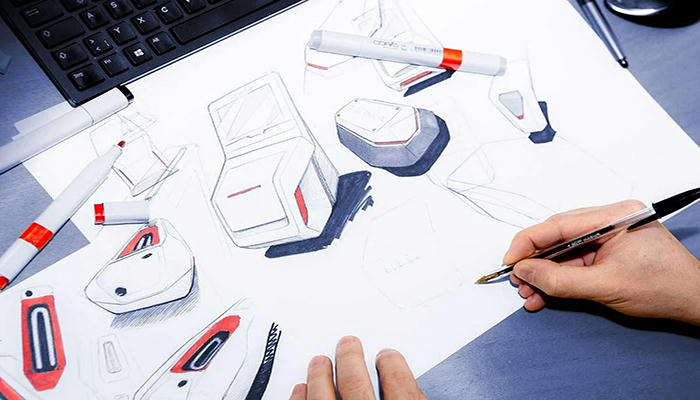What Knowledge Can You Gain from Studying Interior Design Courses?
In today’s fast-paced and ever-evolving design industry, acquiring a diverse skill set and deep knowledge base is essential for standing out. Interior design courses provide students with a comprehensive education, equipping them with the tools to understand and apply the principles of spatial design in real-world scenarios. From creative conceptualization to practical implementation, mastering these skills is crucial for anyone aspiring to succeed in this dynamic field. Below, we explore the core areas of knowledge you can gain from studying interior design.

Core Knowledge Areas in Interior Design
1. Space Planning: Organizing Interior Spaces Efficiently
Space planning is the foundation of interior design, focusing on arranging spaces to maximize functionality and efficiency. Interior design courses teach students how to:
•Assess the required space for a project.
•Create detailed floor plans.
•Determine the optimal placement of furniture and fixtures.
•Ensure the design meets the needs of its users.
Example: Restaurant Design
•Seating Layout: Arrange tables and chairs to balance privacy for diners with maximizing space to accommodate more guests.
•Functional Zones: Divide the restaurant into distinct areas, such as dining, bar, and lounge spaces, to cater to different customer needs.
•Space Flow: Design smooth circulation paths to ensure customers can move effortlessly through the space without congestion.
2. Color Theory: Understanding How Colors Affect Perception
Color theory explores how colors influence emotions, perceptions, and the overall atmosphere of a space. Students learn:
•The psychology of colors and their impact on mood.
•How to create harmonious color schemes.
•Techniques for using color to enhance a room’s aesthetic appeal.
Example: Restaurant Design
•Primary Color Scheme: Choose warm colors like orange or yellow for an Italian restaurant to create a cozy and inviting atmosphere.
•Color Pairing: Use complementary or contrasting colors to add visual depth and interest.
•Impact on Experience: Thoughtful color choices can enhance the dining experience, reinforce brand identity, and attract customers.

3. Lighting Design: Creating the Right Mood with Light
Lighting design is a critical aspect of interior design, influencing both functionality and ambiance. Students learn how to:
•Select and position lighting fixtures effectively.
•Combine natural and artificial light sources.
•Use lighting to highlight architectural features and create desired moods.
Example: Restaurant Design
•Ambient Lighting: Use recessed lights or chandeliers to provide even, general illumination.
•Task Lighting: Install pendant lights or table lamps to ensure adequate lighting for reading menus and enjoying meals.
•Accent Lighting: Incorporate wall sconces or LED strips to create a warm, inviting glow without direct glare.
4. Materials and Finishes: Choosing Practical and Aesthetic Elements
Selecting the right materials and finishes is essential for both functionality and visual appeal. Students learn about:
•Different types of materials and their applications.
•How to choose materials that are durable, easy to maintain, and aesthetically pleasing.
•The role of textures and finishes in creating a cohesive design.
Example: Restaurant Design
•Durability: Use stain-resistant tiles or durable paint for high-traffic areas like kitchens.
•Ease of Maintenance: Opt for smooth, easy-to-clean surfaces to reduce daily upkeep.
•Comfort: Incorporate warm, comfortable materials like wood or soft fabrics in dining areas to enhance the customer experience.

5. Furniture and Fixtures Selection: Balancing Functionality and Aesthetics
Choosing the right furniture and fixtures is key to creating a balanced and appealing space. Students learn:
•How to select furniture that complements the design theme.
•The importance of ergonomics and user comfort.
•Strategies for maximizing space utilization.
Example: Restaurant Design
•Customer Comfort: Choose ergonomic chairs that provide comfortable seating for extended periods.
•Space Utilization: Use flexible furniture arrangements to adapt to different group sizes and events.
•Durability and Maintenance: Select materials like waterproof fabrics or scratch-resistant plastics to minimize upkeep.
•Aesthetic Appeal: Ensure furniture styles align with the restaurant’s overall design theme and color scheme.
Conclusion
As consumers increasingly seek personalized and customized interior design solutions that reflect their unique tastes and lifestyles, interior designers who offer bespoke services are well-positioned to thrive in the market. By systematically studying interior design, staying updated on industry trends, and embracing new technologies, aspiring designers can equip themselves with the knowledge and skills needed to succeed in this competitive field.
Whether you’re designing a cozy home, a bustling restaurant, or a sleek office space, the knowledge gained from interior design courses will empower you to create functional, aesthetically pleasing, and innovative environments. Start your journey today and unlock the potential to transform spaces and lives through the art of interior design!
